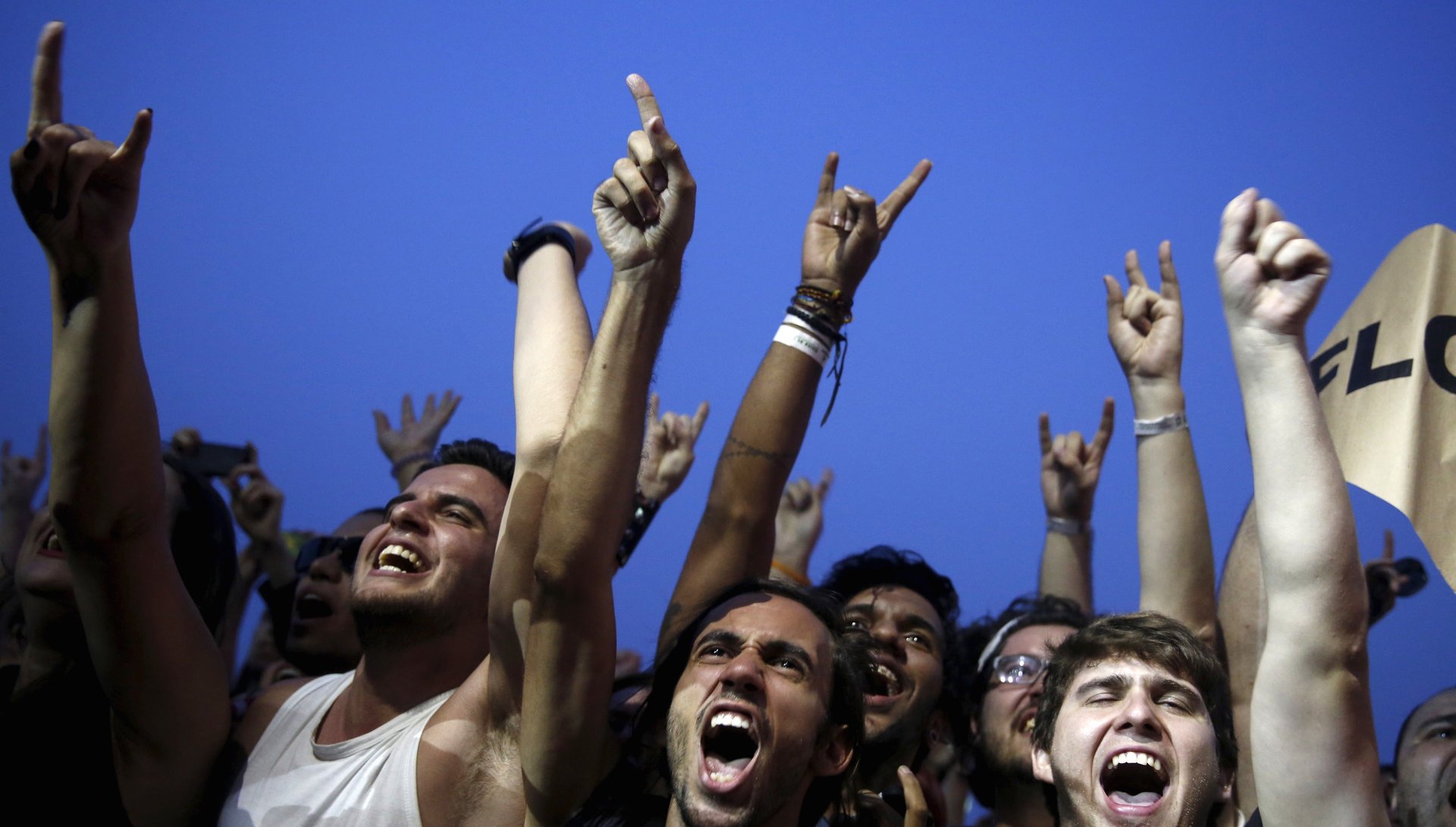To see these rock music icons for the last time at “Oldchella,” you’ll have to pay up
Woodstock in 1969 cost $18, or about $117 in today’s prices, for the chance to see artists like Jimi Hendrix and The Who in their primes. That was a long time ago.


Woodstock in 1969 cost $18, or about $117 in today’s prices, for the chance to see artists like Jimi Hendrix and The Who in their primes. That was a long time ago.
This morning at 10am Pacific time, tickets go on sale for Desert Trip, the star-studded, three-day music extravaganza in October featuring a slew of legendary acts like Paul McCartney, The Rolling Stones, Bob Dylan, Neil Young… and what’s left of The Who. As Young’s manager has noted, people likely “won’t get a chance to see a bill like this perhaps ever again.”
The Who’s Roger Daltrey also alluded to the recent passings of Prince and David Bowie as reason to attend this special event. “We have to face it, we are the end of an era,” he told the BBC. ”We’re the last of our generation. You can see from reading the obituaries lately that we don’t make old bones very well, do we?”
But how deep will fans have to reach into their pockets for this oh-so-rare last chance?
The festival itself
The show is being organized by the company that puts on Coachella every year—a multi-million-dollar juggernaut in itself. Coachella three-day passes start at $375 and a weekend can add up to more than $1,000, easily.
In similar fashion, Desert Trip will offer the following passes:
As the biggest acts are spread out across multiple days (the Rolling Stones will take the stage on Friday evening, for example, while McCartney is slated for Saturday, and The Who will play on Sunday), the festival is essentially pushing fans to spring for one of the three-day options.
The most basic of those passes, offering only entrance and parking, is $399.
For additional amenities—like reserved seating, but also access to “shaded picnic areas” and “extra restrooms”—the cost soars to $1,599. None of these figures includes the $26-91 service fee applied to each ticket.
(Those who are appalled at these prices probably have the festival’s headliners themselves to thank: industry experts speculate that each act in the show is pulling in around $7 million.)
Getting there, getting around
While general parking at the festival is free, VIP parking is $150. Keeping a car on the grounds overnight runs up a few hundred dollars. Bringing an RV will set you back more than $950.
Since the show takes place in a remote desert area, you’ll likely need transportation from the airport ($50 for a basic shuttle ride from LAX, much more if you want a private car or taxi). And since the grounds are vast, you’ll probably want to purchase the $25 festival shuttle pass. It’s important to note, though, that the latter is only valid during ”shuttle operating hours.”
Room and board
The music ends, and you’re exhausted. Where to stay at night? For $99, you can camp on the festival’s grounds themselves—but you’ll have to bring your own tent, and it can take up no more than a 15-by-10-foot rectangle. Upgrade to a “fully pitched and ready-to-go tee-pee style tent with 16-foot diameter equipped with two cots” for a mere $1,600.
That really is only a modest splurge, compared to the $10,000 “safari tent camping” option, which includes air-conditioned “Shakir-style tents,” outdoor lighting, secure fence lines, and snacks.
As for hotels, rooms are already going for as much as $719 a night, according to local paper The Desert Sun. While the festival itself is offering a number of vacation packages in partnership with local institutions, they’re not quite what most people would probably consider budget deals. And there aren’t that many hotels around the area to begin with.
Nourishment-wise, you’ll have to bring your own food or drive to grocery stores and restaurants in nearby cities; the only other alternative is purchasing one of Desert Trip’s “food experience” packages for $179 to $499—one of which is a single four-course meal that costs $225.
…and the rest
Plane tickets. Toll roads. Sunscreen, water bottles, toothpaste. Don’t forget all the miscellaneous charges that tend to creep up when you travel anywhere. If your destination is a once-in-a-lifetime concert with arguably the greatest artists of the last century, souvenirs are also going to be a must. How much should you budget for, say, an official festival poster?
The answer: no less than $75. Plus fees, of course.